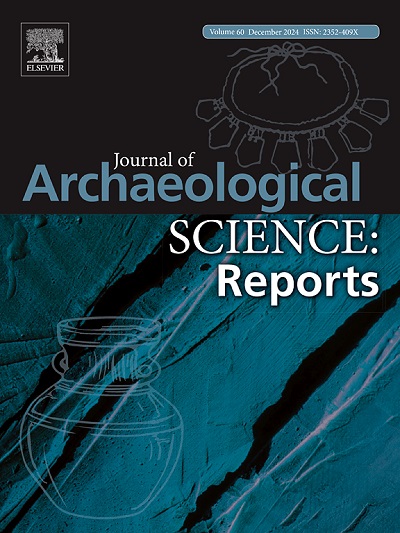Nordic irruptive birds within a Mediterranean avian assemblage at the Neanderthal and modern human site of Cova del Gegant (Sitges, Barcelona)
IF 1.5
2区 历史学
0 ARCHAEOLOGY
引用次数: 0
Abstract
The avian remains from Cova del Gegant site (Sitges, Barcelona) presents a Mediterranean assemblage with the occurrence of irruptive Nordic species (Bubo scandiacus, Plectrophenax nivalis, Pinicola enucleator and Loxia pytyopsittacus) in certain stratigraphic layers associated with cooler climatic phases. These remains suggest the presence of ornithocenoses that have no equivalent in modern European avifauna. Alectoris rufa is relatively abundant species in the stratigraphic sequence, and together with other Mediterranean birds, constitutes the majority of the faunal record. However, the presence of five Nordic irruptive species indicates periodic climatic shifts that resulted in the displacement of these birds to the south. Despite the current littoral location of the site, the presence of only a limited number of seabirds was observed, which may be attributed to the absence of raptors that typically hunt on water surfaces and to the presence of an emerged coastal platform in front of the cave. The assemblage comprises 46 identified bird species. It is noteworthy that choughs (P. pyrrhocorax and P. graculus), which seek refuge in rock cavities, are overrepresented in the record due to their behaviour of retreating deeper into caves when threatened.
尼安德特人和现代人在Cova del Gegant(巴塞罗那锡切斯)遗址的地中海鸟类群中的北欧入侵鸟类
Cova del Gegant遗址(巴塞罗那锡切斯)的鸟类遗骸呈现出地中海组合,在某些与较冷气候阶段相关的地层中出现了入侵的北欧物种(Bubo scandiacus, Plectrophenax nivalis, Pinicola enucleator和Loxia pytyopsittacus)。这些遗骸表明,在现代欧洲鸟类中没有类似的鸟科动物存在。褐翅鸟是地层序列中相对丰富的物种,与其他地中海鸟类一起构成了大部分的区系记录。然而,五种北欧入侵物种的出现表明,周期性的气候变化导致这些鸟类迁移到南方。尽管该遗址目前位于沿海地区,但只观察到有限数量的海鸟,这可能是由于没有通常在水面上捕食的猛禽,以及洞穴前出现了一个沿海平台。该鸟类群包括46种已确认的鸟类。值得注意的是,在岩洞中寻求庇护的chough (P. pyrrhocorax和P. graculus)在记录中有过多的代表,因为它们在受到威胁时退缩到更深的洞穴中。
本文章由计算机程序翻译,如有差异,请以英文原文为准。
求助全文
约1分钟内获得全文
求助全文
来源期刊

Journal of Archaeological Science-Reports
ARCHAEOLOGY-
CiteScore
3.10
自引率
12.50%
发文量
405
期刊介绍:
Journal of Archaeological Science: Reports is aimed at archaeologists and scientists engaged with the application of scientific techniques and methodologies to all areas of archaeology. The journal focuses on the results of the application of scientific methods to archaeological problems and debates. It will provide a forum for reviews and scientific debate of issues in scientific archaeology and their impact in the wider subject. Journal of Archaeological Science: Reports will publish papers of excellent archaeological science, with regional or wider interest. This will include case studies, reviews and short papers where an established scientific technique sheds light on archaeological questions and debates.
 求助内容:
求助内容: 应助结果提醒方式:
应助结果提醒方式:


